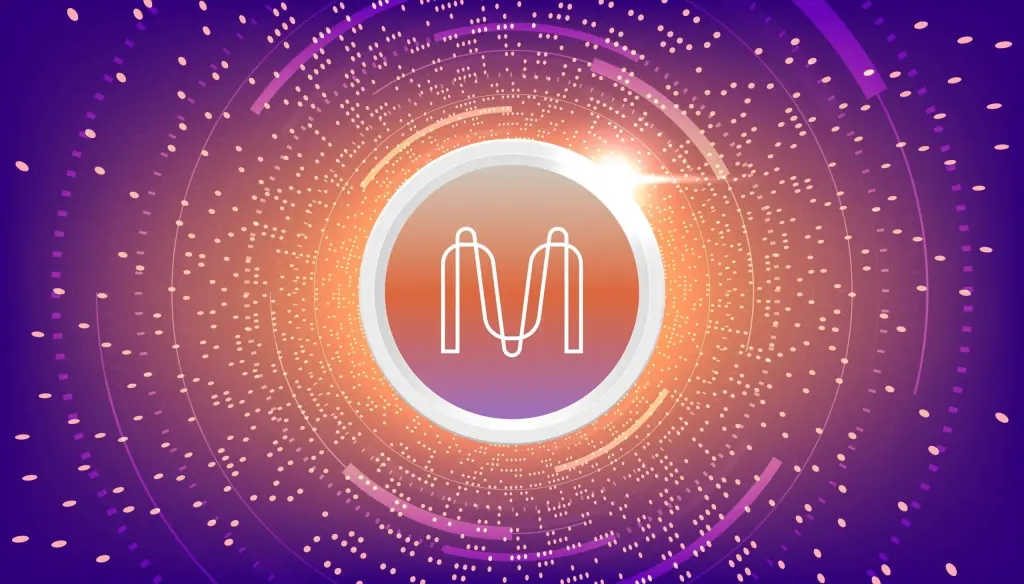Summary:
- zk-SNARKs Technology: Mina leverages zk-SNARKs to enhance privacy and verification efficiency without needing to store large amounts of data.
- Focus on Privacy: By using zk-SNARKs, Mina enables private transactions and improves user control over personal data, setting it apart from other blockchains.
- Decentralization Challenges: Despite its potential, the protocol must continue to address challenges around scaling decentralized applications and maintaining security.
Mina Protocol has emerged as a groundbreaking layer-1 blockchain distinguished by its unique use of zero-knowledge proofs (zk-SNARKs). Launched in 2021, Mina’s primary innovation is its fixed blockchain size—only 22KB, a fraction of the size of conventional blockchains. This makes Mina the world’s lightest blockchain, solving a critical issue of blockchain bloat that limits accessibility and scalability in traditional blockchain systems.
At the heart of Mina’s innovation is zk-SNARK technology, which allows for the secure verification of complex data without exposing the actual data. This enables privacy-preserving applications to be built on the platform. Mina’s zkApps, decentralized applications utilizing zero-knowledge proofs, bring robust privacy features to Web3, making it a compelling solution for decentralized finance (DeFi), digital identities, and cross-chain applications.
This approach stands in contrast to blockchains like Ethereum, which are often criticized for requiring substantial computational resources to store ever-growing data. By using recursive zk-SNARKs, Mina maintains a compact size while still ensuring security and transparency, making it ideal for those looking to interact with blockchain without needing extensive hardware infrastructure.
Mina’s Recent Updates and the Berkeley Upgrade
In 2024, Mina Protocol took a significant leap forward with its Berkeley upgrade, which represents one of the most important technological developments for the protocol. The upgrade enhances zk-programmability, enabling developers to create more complex and efficient zkApps. These applications can now support off-chain computations and incorporate private inputs for greater security and privacy.
Beyond expanding zkApp capabilities, the Berkeley upgrade introduced improvements in transaction throughput and finality time, critical components for Mina’s scalability. Additionally, Mina’s team has laid the foundation for Layer 2 (L2) solutions, which are set to further alleviate on-chain congestion by processing transactions off-chain, ensuring the network remains nimble and responsive even as adoption grows.
To promote interoperability with other blockchains, Mina is launching an Ethereum Token Bridge by the end of 2024. This bridge will allow Ethereum-based assets to be integrated into Mina’s ecosystem, providing liquidity for Mina’s decentralized applications (dApps) and decentralized exchanges. This marks a key step towards broader DeFi integration and signals Mina’s commitment to becoming a central privacy layer for cross-chain applications.
Challenge 1: Scalability Bottlenecks Beyond zk-SNARKs
While Mina’s lightweight architecture and zk-SNARKs solve many traditional scalability issues, there are still bottlenecks related to transaction throughput and finality times, especially as the network grows. Although zk-SNARKs compress data and keep the blockchain small, the demand for higher transaction volumes can strain network performance over time.
Solution: Mina’s Berkeley upgrade addresses some of these concerns by enabling more efficient zk-programmability and introducing Layer 2 capabilities. Further improvements, such as rollups and off-chain computation, can help offload transaction processing from the main chain, boosting overall network capacity without compromising decentralization.
Layer 2 solutions have been widely adopted in other ecosystems, such as Ethereum’s Optimistic and ZK rollups, which allow transactions to be processed off-chain and then securely rolled back onto the main chain. Mina could adopt similar solutions, ensuring the protocol remains scalable as usage increases.
Challenge 2: Developer Accessibility
Mina’s reliance on zk-SNARK technology requires specialized knowledge, creating barriers for developers unfamiliar with zero-knowledge proofs. This complexity limits the growth of the developer ecosystem and slows the adoption of zkApps. Additionally, the current documentation and tooling need to be more robust and user-friendly to attract a broader range of developers.
Solution: Mina has already taken steps to solve this with initiatives like the Navigators grant program, which incentivizes zk-SNARK development. Expanding this effort with more comprehensive documentation, plug-and-play tools, and a user-friendly development framework would ease adoption. Collaborations with education platforms to offer courses on zk-SNARKs and blockchain development can also cultivate a new generation of developers.
The integration of zk-SNARKs into blockchain development is a relatively new frontier, and while it offers unparalleled privacy and efficiency, it requires substantial knowledge of cryptography. By simplifying this process with developer-friendly SDKs (software development kits) and frameworks, Mina could rapidly increase its developer base. This would further encourage the creation of dApps, DeFi solutions, and zkApps within the Mina ecosystem.
Challenge 3: Interoperability with Other Blockchains
For Mina to gain widespread adoption, it must integrate with other popular blockchains. Currently, its interoperability is limited, which restricts Mina’s potential to be used in broader DeFi ecosystems or cross-chain applications. Without seamless cross-chain compatibility, Mina risks being siloed within its own ecosystem.
Solution: Mina is already working on an Ethereum Token Bridge, which will bring Ethereum-based assets into the Mina ecosystem. Expanding this effort to include bridges with other key blockchain networks like Cosmos, Polkadot, and Avalanche would provide a more comprehensive solution. Moreover, establishing protocols for seamless interoperability would allow Mina to become a privacy layer for multiple blockchains, significantly enhancing its utility across the decentralized ecosystem.
Cross-chain bridges, such as Polkadot’s parachains and Cosmos’ IBC protocol, have demonstrated the importance of interoperability for the wider adoption of decentralized applications. Mina’s lightweight nature makes it a strong candidate for becoming the go-to privacy layer for many blockchain ecosystems, provided it can establish robust and secure connections to these other networks.
Mina Protocol represents a cutting-edge approach to blockchain technology, offering unique privacy solutions through its innovative use of zk-SNARKs. However, like any ambitious project, Mina faces a series of challenges that need to be addressed for it to achieve mainstream adoption.
By tackling scalability, improving developer accessibility, enhancing cross-chain interoperability, simplifying user onboarding, refining governance, and bolstering security, Mina is well-positioned to lead the next generation of privacy-preserving decentralized applications. With a clear roadmap and strategic upgrades like Berkeley, the protocol continues to evolve, setting new standards for blockchain innovation.

